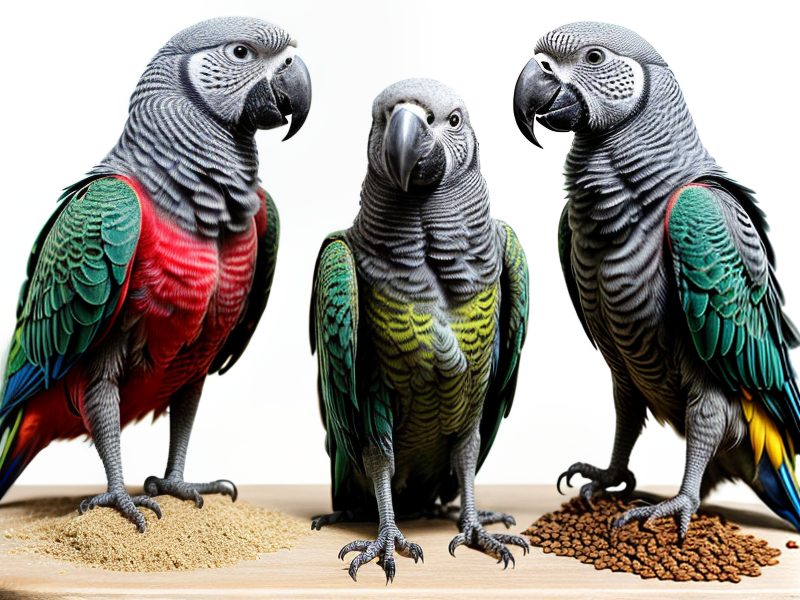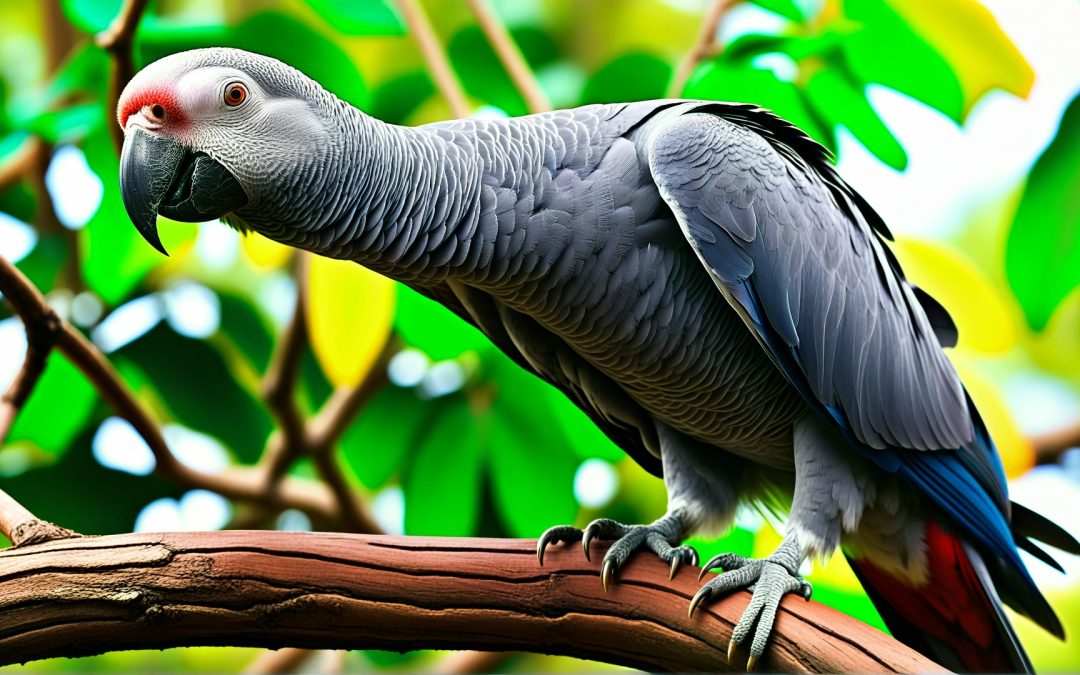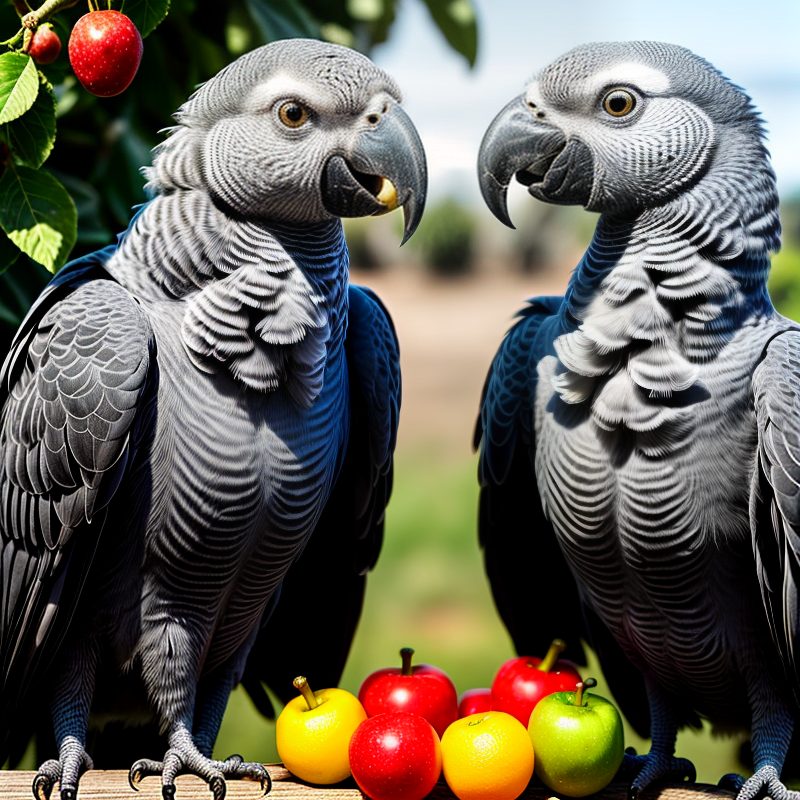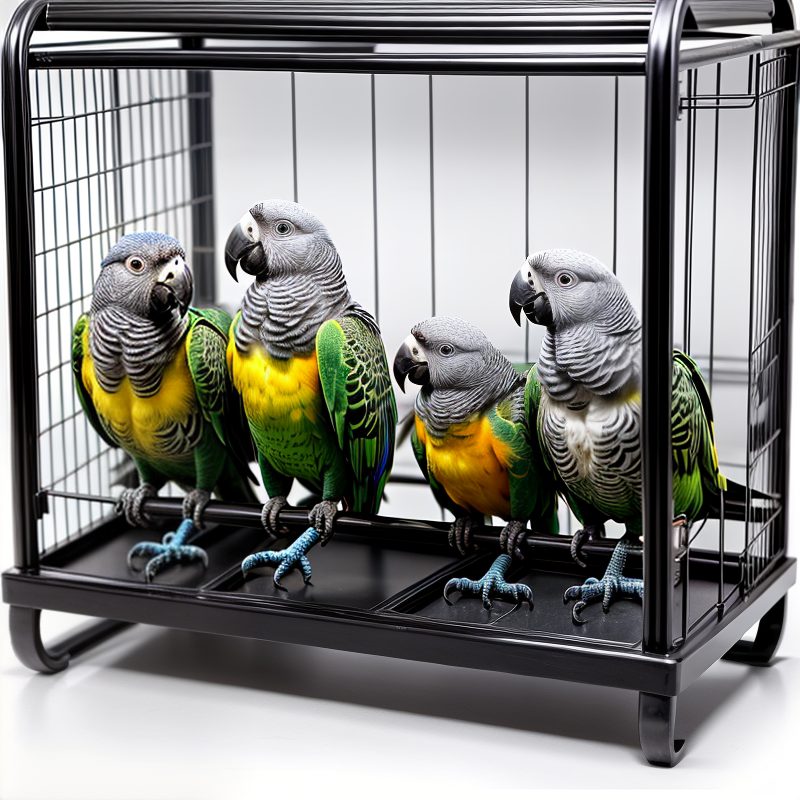Understanding African Grey Parrots
Natural Habitat of the African Grey Parrot
The African Grey Parrot (Psittacus erithacus), known for its remarkable intelligence and captivating mimicking abilities, thrives in a specific natural habitat that plays a crucial role in its survival and well-being. Understanding the natural environment of these parrots can provide insights into their behavior, diet, and the challenges they face in the wild.
Geographic Distribution
African Grey Parrots are native to the rainforests of West and Central Africa. Their range spans several countries, including:
- Cameroon
- Congo
- Democratic Republic of the Congo (DRC)
- Ghana
- Ivory Coast
- Kenya
- Uganda
These regions provide the ideal climatic and ecological conditions for African Greys to thrive.
Preferred Habitats
African Greys predominantly inhabit:
Dense Rainforests
The primary natural habitat of the African Grey Parrot is dense, lowland rainforests. These lush, green environments provide abundant food sources and ample cover from predators. The dense canopy offers a rich diversity of fruits, nuts, seeds, and leaves that form the bulk of their diet.
Mangroves and Coastal Forests
In addition to rainforests, African Greys can also be found in mangroves and coastal forests. These areas provide a similar abundance of food and nesting sites, allowing the parrots to maintain their social structures and breeding activities.
Savannas and Agricultural Areas
While less common, African Greys are sometimes seen in savannas and agricultural areas, especially when food is scarce in their primary habitats. They may venture into farmlands to feed on crops, which can lead to conflicts with humans.
Social Structure and Behavior
African Grey Parrots are highly social birds, often forming large flocks that provide safety in numbers. These flocks are not just for protection; they are essential for social interaction and learning. Young parrots learn crucial survival skills, such as foraging and vocalization, from older flock members.
Roosting and Nesting
African Greys roost in tall trees, where they find safety from ground predators. They nest in tree cavities, which offer protection and a suitable environment for raising their young. The availability of these nesting sites is critical for their reproductive success.
Diet in the Wild
The diet of African Grey Parrots in the wild is diverse and seasonally variable. They primarily feed on:
- Fruits
- Nuts
- Seeds
- Bark
- Leaves
Their strong beaks are adapted to crack open hard shells, allowing them access to a variety of nuts and seeds. Seasonal variations in food availability can influence their foraging behavior and movement patterns.
Conservation Status and Threats
Despite their adaptability, African Grey Parrots face several threats in the wild:
Habitat Loss
Deforestation and land conversion for agriculture are the primary threats to their natural habitat. As rainforests are cleared, African Greys lose crucial roosting, nesting, and foraging sites.
Illegal Wildlife Trade
African Grey Parrots are highly sought after in the pet trade due to their intelligence and ability to mimic human speech. This demand has led to extensive trapping and smuggling, severely impacting wild populations.
Climate Change
Climate change poses an emerging threat by altering the availability of food and suitable habitats. Changes in weather patterns can also affect their breeding cycles and the health of their forest habitats.
Conservation Efforts
Efforts to protect African Grey Parrots and their habitats include:
- Protected Areas: Establishing and managing protected areas to conserve critical habitats.
- Legislation: Enforcing laws and regulations to curb illegal trade and trapping.
- Community Engagement: Involving local communities in conservation efforts and promoting sustainable practices.
Conclusion
The natural habitat of the African Grey Parrot is a vital component of its existence, influencing its behavior, diet, and social structure. Conservation efforts are essential to ensure these intelligent and fascinating birds continue to thrive in the wild. By understanding and protecting their natural habitats, we can help secure a future for African Grey Parrots and the rich biodiversity of the rainforests they call home.
Explore Our African Grey Parrot Gallery
African Grey Parrots in Action
Top Supplies for African Grey Parrots

Premium Parrot Cage
This spacious and durable cage provides a safe and comfortable environment for your African Grey Parrot. It features multiple perches, feeding stations, and a secure locking system.
Stainless Steel Food Bowls
Interactive Parrot Toys
Natural Wood Perches
Vitamin-Enriched Parrot Food

Deluxe Parrot Play Stand
Encourage your African Grey Parrot to exercise and play with this versatile play stand, equipped with ladders, swings, and feeding cups.
Calcium Enrichment Blocks
Parrot Training Clicker
Bird Bath Spray
Parrot Harness and Leash
Discover Your Perfect African Grey Parrot
Explore our selection of African Grey Parrots and find the perfect companion for your home. Browse our range of high-quality parrot supplies to ensure your new friend has everything they need.





